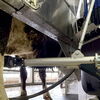
Processing Your Payment
Please do not leave this page until complete. This can take a few moments.
- News
-
Editions
-
- Lists
-
Viewpoints
-
Our Events
-
Event Info
- Women's Leadership Forum 2025
- On the Road with Mainebiz in Bethel
- Health Care Forum 2025
- On The Road with Mainebiz in Greenville
- On The Road with Mainebiz in Waterville
- Small Business Forum 2025
- Outstanding Women in Business Reception 2025
- On The Road with Mainebiz in Bath
- 60 Ideas in 60 Minutes Portland 2025
- 40 Under 40 Awards Reception 2025
- On The Road with Mainebiz in Lewiston / Auburn
- 60 Ideas in 60 Minutes Bangor 2025
Award Honorees
- 2025 Business Leaders of the Year
- 2024 Women to Watch Honorees
- 2024 Business Leaders of the Year
- 2023 NextUp: 40 Under 40 Honorees
- 2023 Women to Watch Honorees
- 2023 Business Leaders of the Year
- 2022 NextUp: 40 Under 40 Honorees
- 2022 Women to Watch Honorees
- 2022 Business Leaders of the Year
-
-
Calendar
-
Biz Marketplace
- News
- Editions
- Lists
- Viewpoints
-
Our Events
Event Info
- View all Events
- Women's Leadership Forum 2025
- On the Road with Mainebiz in Bethel
- Health Care Forum 2025
- On The Road with Mainebiz in Greenville
- On The Road with Mainebiz in Waterville
- + More
Award Honorees
- 2025 Business Leaders of the Year
- 2024 Women to Watch Honorees
- 2024 Business Leaders of the Year
- 2023 NextUp: 40 Under 40 Honorees
- 2023 Women to Watch Honorees
- 2023 Business Leaders of the Year
- + More
- 2022 NextUp: 40 Under 40 Honorees
- 2022 Women to Watch Honorees
- 2022 Business Leaders of the Year
- Nomination Forms
- Calendar
- Biz Marketplace
Maine hospitals are struggling, trade association reports
 Photo / Courtesy Maine Hospital Association
Northern Light Health, Maine’s second-largest health care system, is trying to reverse a trend of steepening financial losses. Seen here is the emergency center at Northern Light’s Ellsworth hospital.
Photo / Courtesy Maine Hospital Association
Northern Light Health, Maine’s second-largest health care system, is trying to reverse a trend of steepening financial losses. Seen here is the emergency center at Northern Light’s Ellsworth hospital.
Maine hospitals are grappling with crippling costs, plummeting revenues and aging infrastructure, with many forced to cut services, delay critical investments and stretch resources beyond safe limits.
That’s the conclusion of a financial analysis of the state’s nonprofit hospitals’ finances, released this week by the Maine Hospital Association.
The situation is unsustainable, the trade association said.

“The findings of this study confirm what Maine hospitals have been experiencing firsthand — a growing financial crisis that threatens their ability to provide care to our communities,” said Steven Michaud, the association’s president.
Maine hospitals rank among the lowest in key financial health indicators compared to hospitals nationwide, the report says.
This year alone, Northern Light Health Inland Hospital announced its closure, while Mount Desert Island Hospital, Houlton Regional Hospital and MaineHealth Waldo Hospital have closed, or will be closing, their labor and delivery units.
The announcements follow other maternity unit closures in recent years, including at York Hospital, Rumford Hospital, Northern Maine Medical Center and St Mary's Regional Medical Center.
Consultant's report
Maine Hospital Association commissioned Knoxville, Tenn.-based PYA Accountants & Consultants to conduct the study, which assessed the financial condition of Maine’s prospective payment system hospitals and critical access hospitals to regional and national benchmarks. The analysis included trends in profitability, liquidity and operational efficiency.
Maine has 18 critical access hospitals and 16 prospective payment system hospitals, Michaud told Mainebiz.
A critical access hospital is a federal designation and is a rural hospital that has a maximum of 25 beds and has an average length of stay for patients of no more than 96 hours. By definition, they are small and remote. Examples are Millinocket Regional Hospital, Houlton Regional Hospital and Penobscot Valley Hospital in Lincoln.
Prospective payment system hospitals are all the non-critical access hospitals.
Examples are Maine Medical Center, Eastern Maine Medical Center and Cary Medical Center in Caribou.
A prospective payment system is a method of reimbursement in which Medicare payment is made based on a predetermined, fixed amount, according to the Centers for Medicare and Medicaid Services.
Prospective payment
The findings indicate that Maine’s hospitals, particularly so-called prospective payment system hospitals, rank among the poorest and most indebted in the country.
Key findings:
- Low profitability: Maine’s PPS hospitals ranked the fifth poorest in the nation, reflecting financial instability.
- High debt burden: The state’s PPS hospitals ranked the second most heavily in debt nationwide, indicating a heavy reliance on debt to fund operations.
- Aging facilities: Maine hospitals have some of the oldest facilities in the nation, ranking No. 46 in average age of plant, which leads to higher maintenance costs and reduced efficiency.
The study found that Maine hospitals struggle to generate sufficient cash flow, ranking No. 42 in net days in patient accounts receivable, impacting financial sustainability.
A comparison with neighboring states showed that New Hampshire’s hospitals are financially stronger, with higher margins and lower debt, while Vermont’s hospitals face similar challenges to Maine’s but still perform slightly better in some metrics.
Critical access
Critical access hospitals have shown relative financial resilience, they are also at risk, struggling with declining liquidity, mounting operational pressures and aging facilities, the report says.
The report did not discuss potential remedies.
“We urge policymakers, health care leaders and the public to take these challenges seriously and work toward sustainable solutions to ensure Maine residents have access to quality hospital care,” said Michaud.
Formed in 1937, the Augusta-based nonprofit association represents 32 community-governed hospitals in Maine.














0 Comments